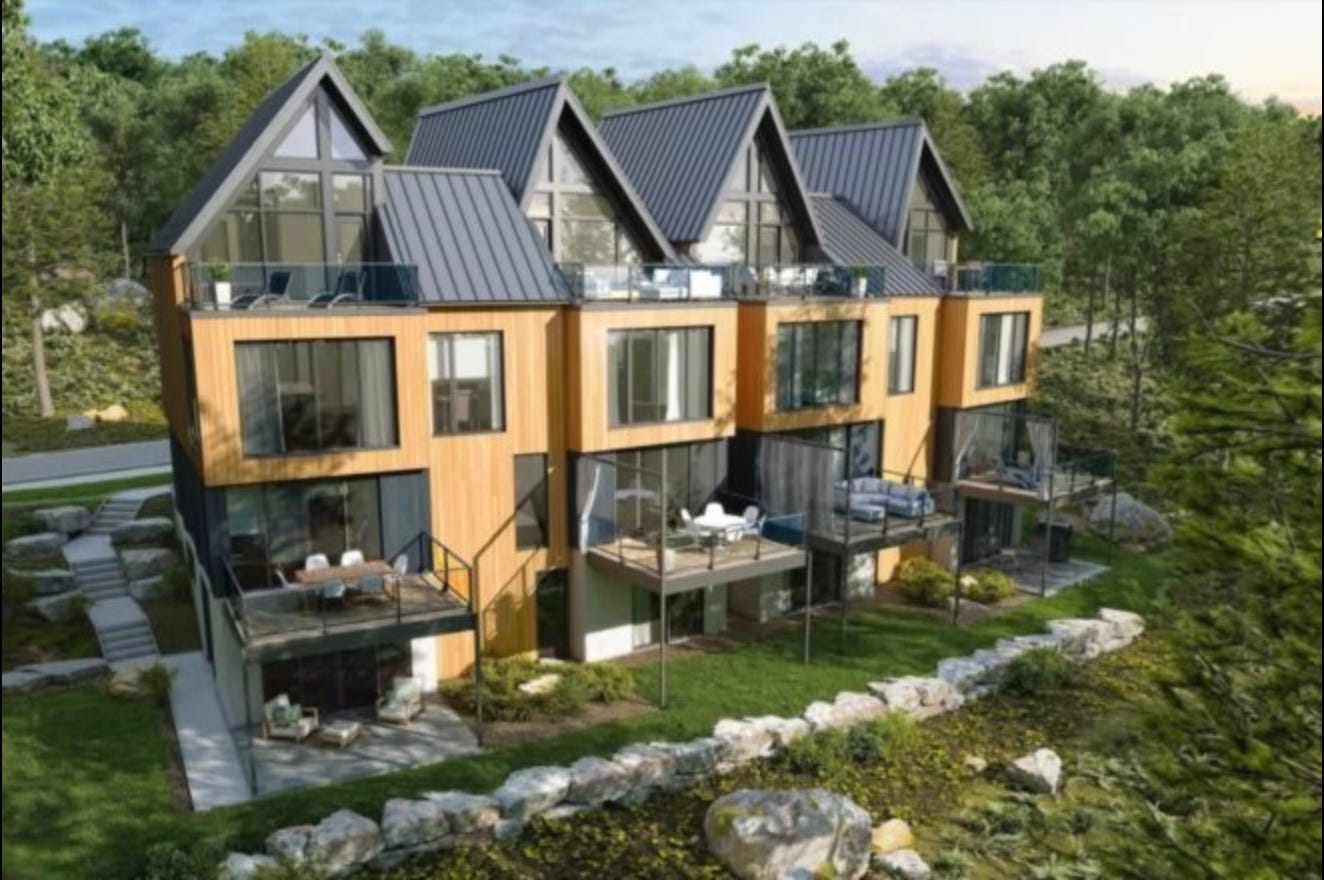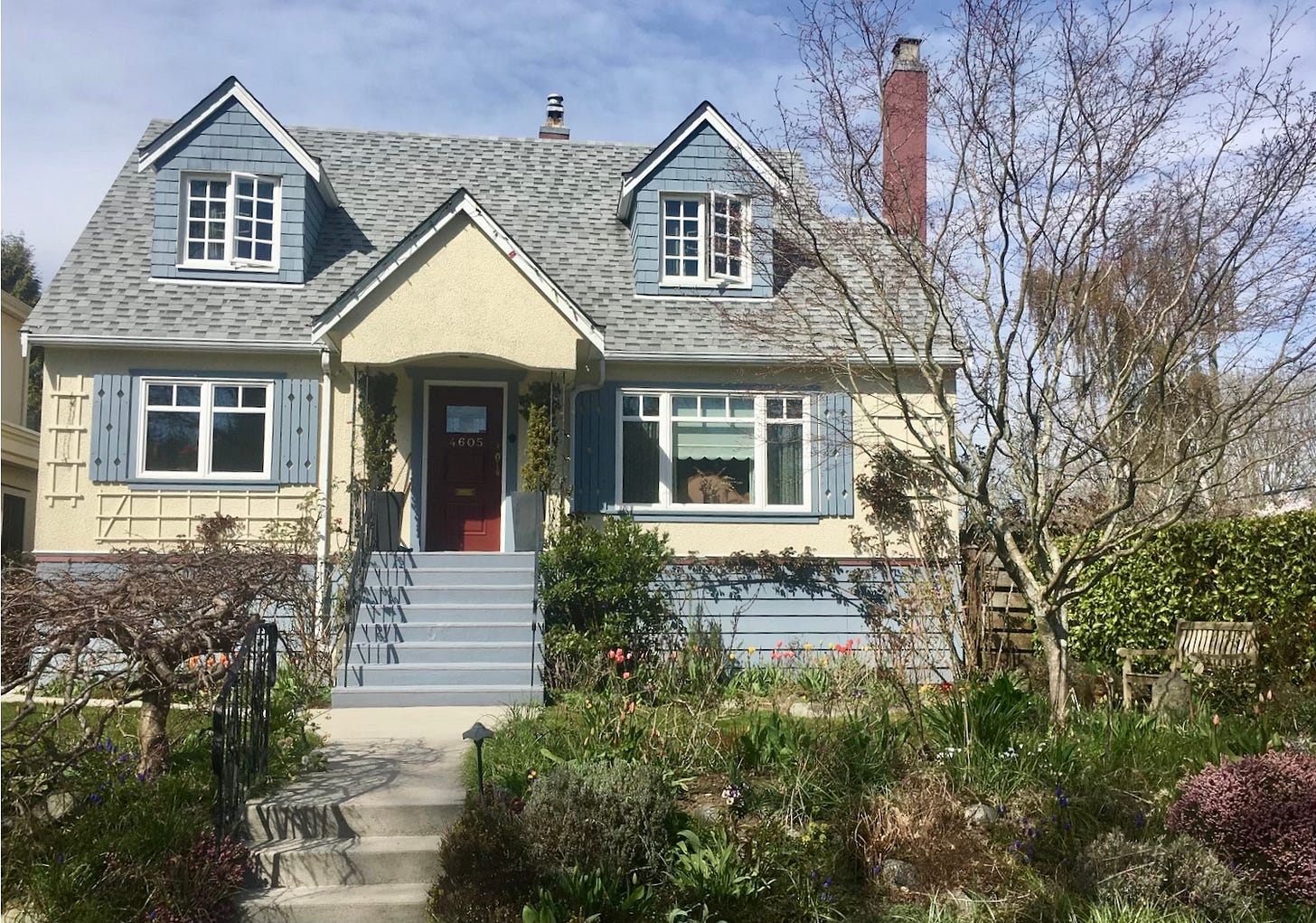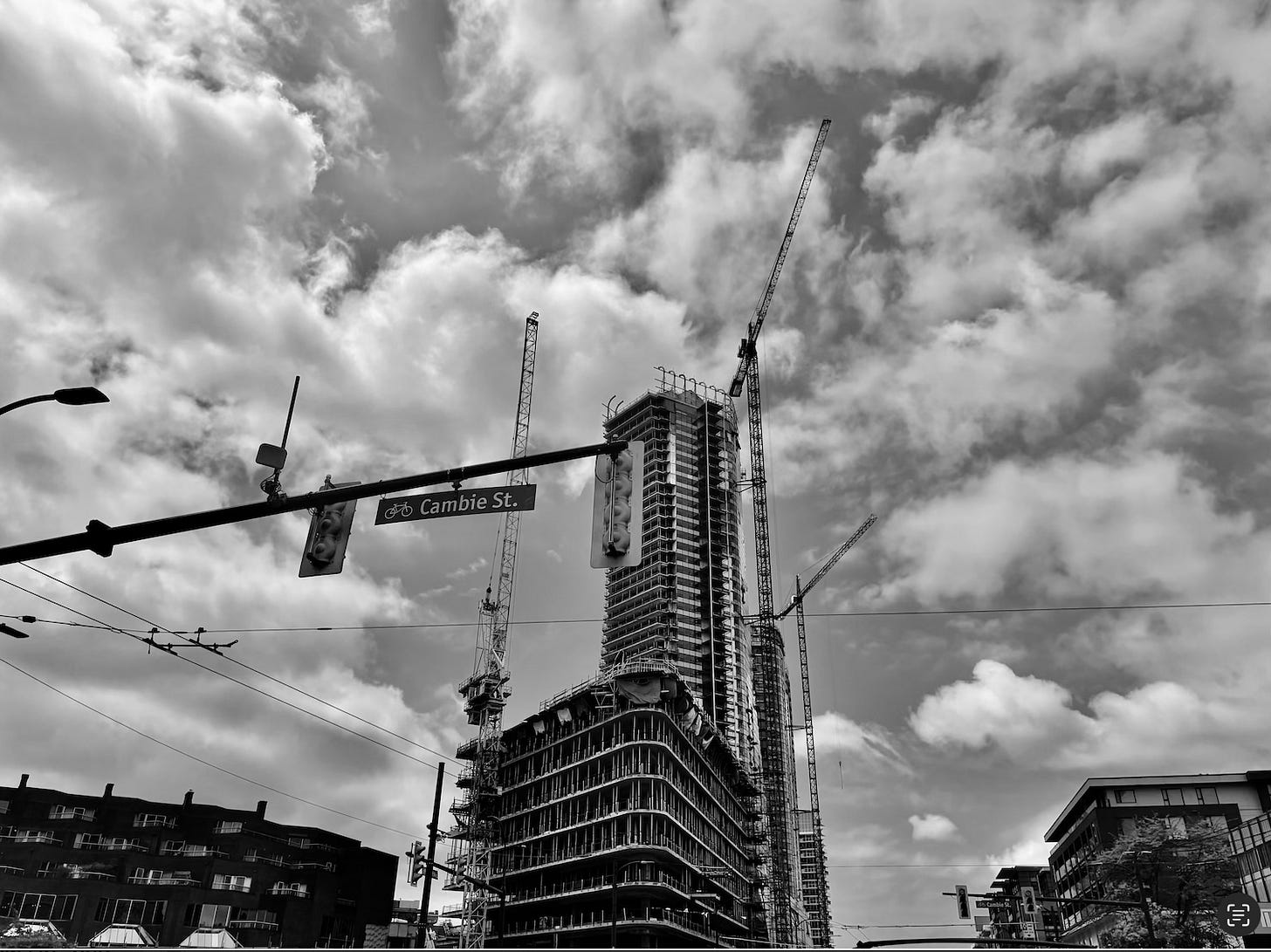The Slow Extinction of the Canadian Home/Una casetta in Canadà (forse)
The dream of the single-family home is slipping away — but new solutions are emerging/Il sogno della villetta unifamiliare si allontana, ma nuove soluzioni prendono forma (segue versione in italiano)
Once guaranteed to millions of families, the single-family home is now a privilege for the few. But Canada is exploring new strategies: prefabricated housing, urban densification, and Scandinavian models
Gone are the days when the dream of owning a “casetta in Canadà” (a little home in Canada, as a famous 1856 Italian song would go) was within reach for the average Canadian — including the hundreds of thousands of immigrants who helped build the country after World War II. Back then, that dream became reality for millions of families, thanks largely to the Canada Mortgage and Housing Corporation (CMHC), created after the war to help veterans find housing, and later renamed the Canadian Housing Information Centre (CHIC) in 1979

The CMHC’s primary mission was to provide liquidity for mortgages and promote the development of affordable housing. For just a few dollars, the public agency offered private citizens and builders access to hundreds of house plans for single-family homes. These free models left a visible mark on the Canadian built environment — one that distinguishes it from the American landscape just south of the border. As Douglas Coupland notes in his delightful and often humorous Souvenir of Canada 2 (Douglas & McIntyre), “these homes were based on a thoroughly Scandinavian idea: that Canadians should have beautiful homes they could afford.” Designs were available for every climate and income bracket. But today, especially in rapidly growing urban centres like Vancouver, Toronto, and Montréal, these old homes are rarely renovated: they’re simply torn down to make way for a new generation of luxury villas reserved for the happy few.
A dream slipping out of reach for urban families
Given today’s economic, demographic, and environmental pressures, the traditional dream of owning a detached house with a garden is increasingly out of reach for most 21st-century Canadians. Unless one is willing to relocate outside the city. “Families can still afford it,” explains Nick Maile, a structural engineer and founder of Vancouver-based consultancy Westbourne Projects Limited, which specializes in large-scale real estate developments, “but only by making major sacrifices and being willing to live far from urban centres or in sparsely populated areas. Finding affordable homes near big cities is becoming really difficult. And I think young families are beginning to realize that if they want to live in major cities, they’ll have to adapt to high-density housing solutions.”
Ahead of the recent federal elections, candidates from the two main parties promised to build thousands of affordable homes. But what kinds of homes did they have in mind? Were specific models or strategies proposed? Not really — the promises were vague, limited to building “more housing.” “The real difference between the two main parties,” says Maile, “is that the Liberals want to create a new government department to act as a housing developer, while the Conservatives want to leave construction to the private sector. The Liberal plan is a terrible idea — something to be avoided at all costs. Yes, we need to build more homes and cut red tape, but the government should not be acting as a builder. That only leads to inefficiency and waste. Every time the public sector tries to imitate the private sector, it ends badly.”
With Canada’s major cities facing similar challenges, local governments are beginning to ease restrictions on housing types and zoning. “In Greater Vancouver,” notes Maile, “they’re moving toward upzoning — changing regulations to allow higher housing density. Even the smallest lots can now accommodate up to four independent units — something unimaginable just a few years ago. The trend is clear: greater density and more diverse housing options, to ease pressure on demand.”
Towers or human-scaled neighbourhoods?
If these are the new priorities in urban planning from coast to coast, then it’s time for Canadians to rethink their dream home. Major developers are pushing high-rises and condos to maximize profits, while citizen groups and neighbourhood collectives are advocating for more sustainable and socially functional alternatives: low- and middle-rise buildings with high density, designed on a human scale. One such example is Vancouver’s Jericho’s Coalition, a volunteer-led group proposing an alternative to the proliferation of residential towers. They envision human-scaled neighbourhoods with low-rise, high-density homes that promote community life, environmental sustainability, and intergenerational inclusivity — “places where children can grow up and elders can age in place.” “After all,” asks rhetorically aVancouver resident who prefers to remain anonymous “Do we want to become Manhattan or Copenhagen?”

The new Canadian dream: vertical, modular, shared
In the short term, the focus may shift to modular construction. At least hat’s the direction signalled by newly elected Prime Minister Mark Carney, who during his election campaign pledged to double the pace of construction to 500,000 new homes per year through a major federal investment in prefabricated housing units (see article). He likened the effort to that of the CMHC in the postwar period. Once again, the model to emulate appears to be Sweden, where more than 80% of new single-family homes are built off-site — in factories — and then assembled on location. According to experts, this approach offers speed, energy efficiency, and environmental sustainability (see article).
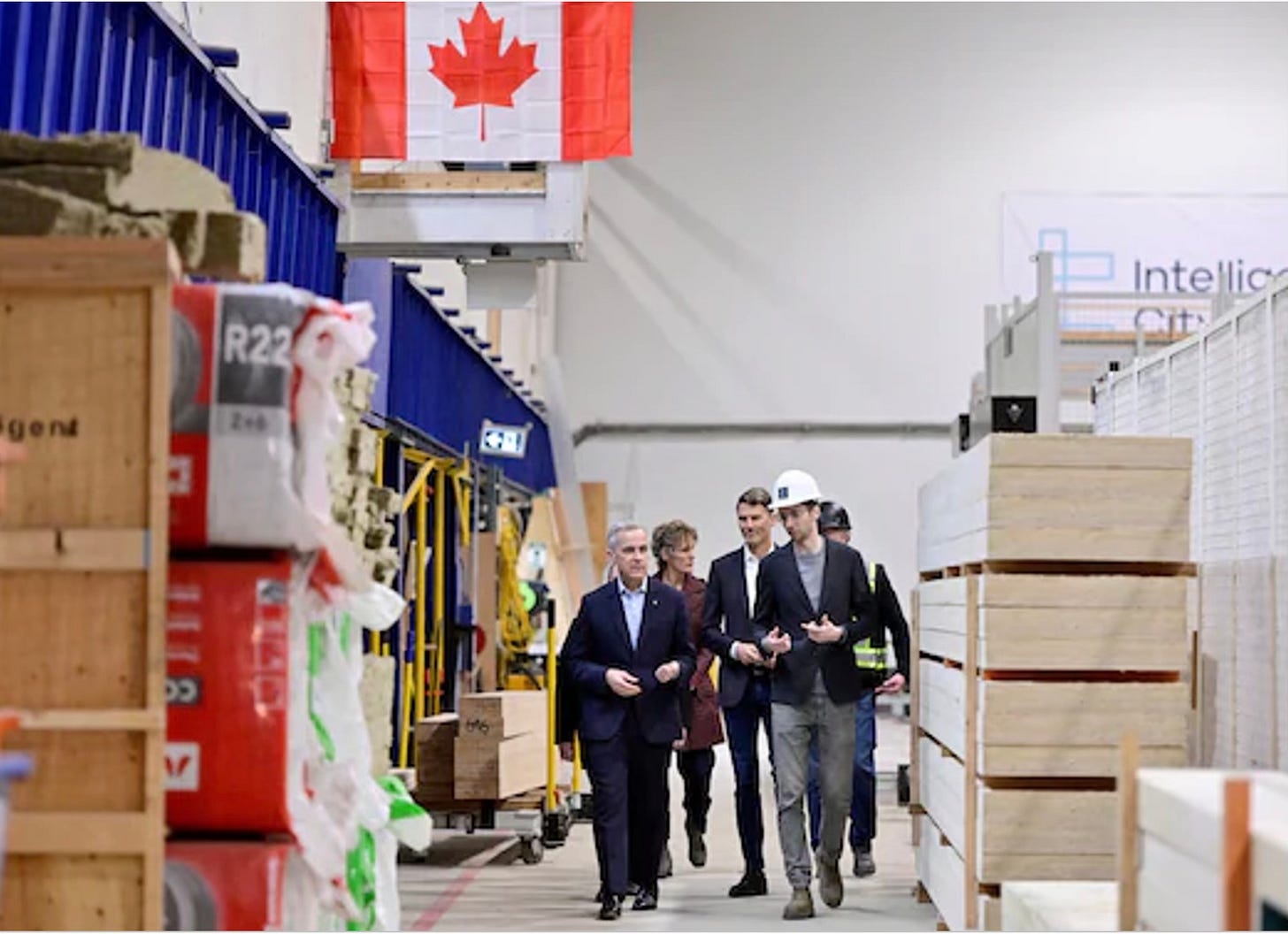
Notably, much of the responsibility will fall on newly appointed Housing Minister Gregor Robertson, who previously served as mayor of Vancouver from 2008 to 2018—a period marked by a sharp worsening of the housing affordability. His appointment has raised some eyebrows, given his track record—although, he has commented, “At that time, I didn’t have the tools to address the housing crisis” (see article).
For those willing to change their dream — and maybe even their postal code — a home in beautiful Canada might still be possible. Provided we accept that today’s homes are built vertically, lived in communally, and dreamed up in modular form.
Una casetta in Canadà (forse)
Un tempo garantita a milioni di famiglie, oggi la casa indipendente è un privilegio per pochi. Ma il Canada esplora nuove strategie: prefabbricati, densificazione urbana e modelli scandinavi
Addio ai tempi in cui il sogno di una “casetta in Canadà” (dal titolo di una popolare canzone di Sanremo 1957) era davvero alla portata del canadese medio — incluse le centinaia di migliaia di immigrati che, dal dopoguerra in poi, contribuirono a costruire il Paese. All’epoca, quel sogno si trasformò in realtà per milioni di famiglie, grazie soprattutto all’intervento della Canada Mortgage and Housing Corporation (CMHC), nata dopo la Seconda guerra mondiale per aiutare i reduci a trovare un tetto e ribattezzata Canadian Housing Information Centre (CHIC) nel 1979.

Il mandato principale della CMHC era quello di garantire liquidità ai mutui e promuovere lo sviluppo di alloggi a prezzi accessibili. Per pochi dollari, l’ente pubblico metteva a disposizione di privati e costruttori centinaia di progetti per case unifamiliari. Quei modelli gratuiti diventarono la firma del paesaggio edilizio canadese — e ciò che lo distingue visivamente da quello statunitense, appena si oltrepassa il confine. Come spiega Douglas Coupland nel suo delizioso e spesso divertente Souvenir of Canada 2 (Douglas & McIntyre), “i progetti di queste case si ispiravano a un’idea tutta scandinava: che i canadesi dovessero avere case belle a prezzi accessibili.” C’erano modelli per ogni tipo di clima e ogni fascia di reddito. Ma oggi, soprattutto nei centri urbani in forte crescita come Vancouver, Toronto o Montréal, queste vecchie case non vengono ristrutturate: vengono semplicemente abbattute per fare spazio a una nuova generazione di ville extralusso per pochi eletti.

Un sogno fuori portata per le famiglie urbane
Date le attuali pressioni economiche, demografiche e ambientali, il sogno di possedere una villetta unifamiliare con giardino appare sempre più irrealizzabile per la maggior parte dei canadesi del 21esimo secolo. A meno che non si sia disposti a trasferirsi fuori città. “Le famiglie possono ancora permettersi una casa indipendente,” dice Nick Maile, ingegnere e fondatore della società di consulenza Westbourne Projects Limited di Vancouver, specializzata nello sviluppo di complessi progetti immobiliari, “ma solo a fronte di grandi sacrifici e se si è disposti a vivere lontano dai centri urbani o in aree poco popolate. Trovare abitazioni accessibili vicino alle grandi città sta diventando davvero difficile. E penso che le giovani famiglie stiano iniziando a capire che, se vogliono vivere nelle grandi città, dovranno adattarsi a soluzioni ad alta densità abitativa.”
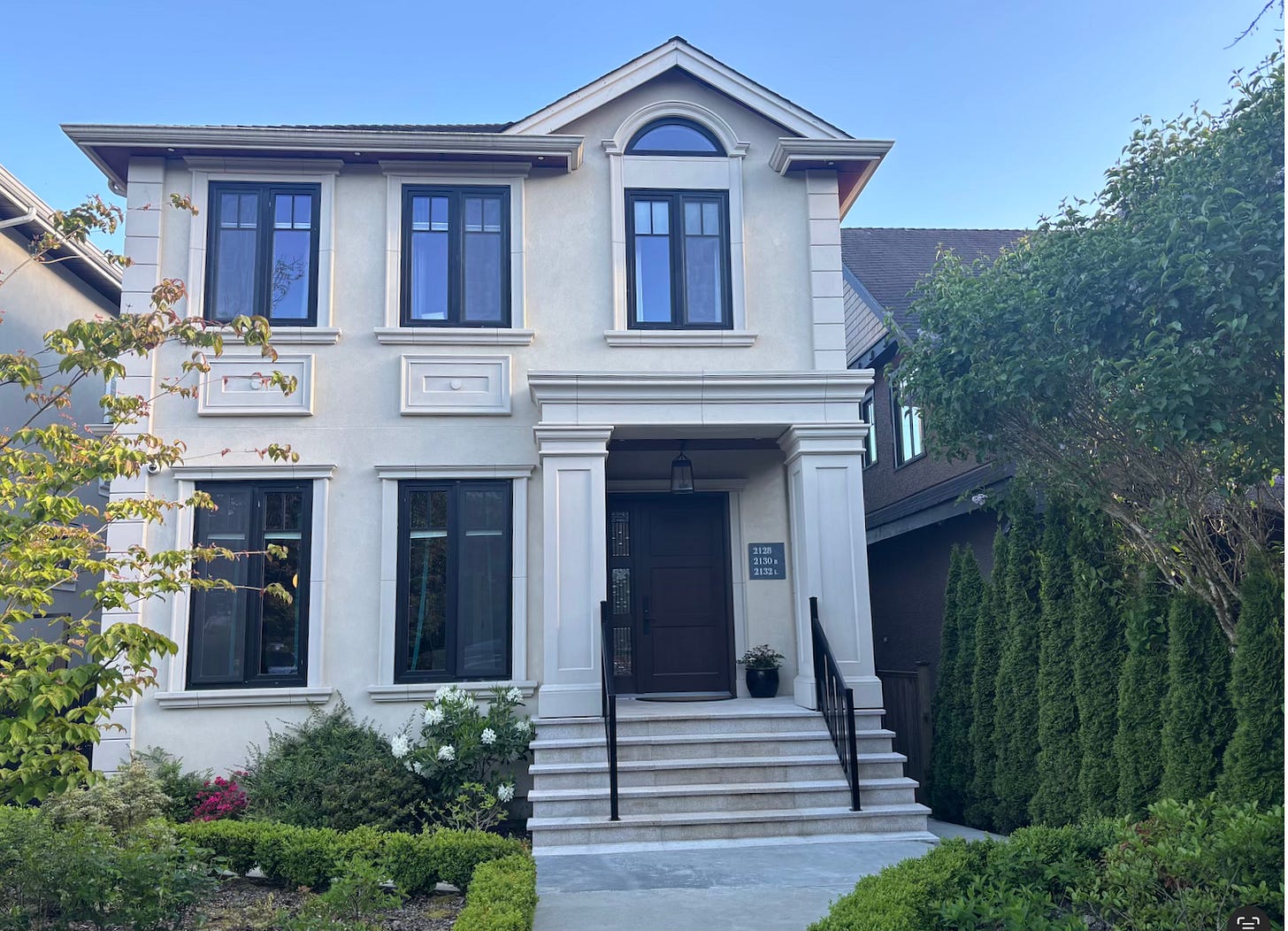
In vista delle recenti elezioni federali, i candidati dei due partiti in lizza hanno promesso di costruire migliaia di case accessibili. Ma quali tipi di abitazioni avevano in mente? Ci sono modelli o strategie proposte al riguardo? Nessuno è davvero sceso nei dettagli, limitandosi a promettere che avrebbero costruito più case. “La vera differenza tra i due principali partiti,” continua Maile, “è che i Liberali hanno promesso di istituire un nuovo dipartimento governativo che funzioni da promotore edilizio, mentre i Conservatori propongono di lasciare la costruzione al settore privato. Quella dei Liberali è una pessima idea. Sì, dobbiamo costruire più case e snellire la burocrazia, ma il governo non dovrebbe fare il costruttore. Questo porta solo a inefficienze e sprechi. Ogni volta che il settore pubblico cerca di imitare quello privato, finisce male.”
Con le grandi città del Paese alle prese con sfide simili, le amministrazioni locali stanno diventando meno rigide riguardo alla tipologia e alle zone abitative. “Nella Greater Vancouver,” dice Maile, “stanno effettuando operazioni di upzoning, cioè modifiche urbanistiche che aumentano la densità abitativa ammessa. Anche i lotti più piccoli oggi possono ospitare fino a quattro unità abitative indipendenti — cosa impensabile fino a pochi anni fa. La tendenza è chiara: più densità e maggiore varietà di soluzioni abitative, per alleggerire la pressione sulla domanda.”
Torri o quartieri a misura d’uomo?
Se queste sono le nuove priorità dell’urbanistica tra la East e la West Coast, allora conviene che i canadesi rivedano il tipo di casa dei loro sogni. I grandi costruttori puntano su grattacieli e condomini per massimizzare i profitti, mentre gruppi di cittadini e collettivi di quartiere propongono invece soluzioni più sostenibili e socialmente funzionali: edifici bassi, ad alta densità ma a misura d’uomo. La Jericho’s Coalition di Vancouver, per esempio, nata dall’impegno di un gruppo di volontari, propone un’alternativa concreta alla proliferazione di torri residenziali: quartieri a misura d’uomo, con abitazioni basse ma ad alta densità abitativa, pensate per favorire la vita comunitaria, la sostenibilità ambientale e l’inclusività intergenerazionale — “luoghi, cioè, dove i bambini possano crescere e gli anziani invecchiare restando nel proprio contesto”. Come ha chiesto retoricamente un cittadino che preferisce rimanere anonimo: “Vogliamo diventare Manhattan o Copenaghen?”
Il nuovo sogno canadese: verticale, modulare, condiviso
Forse però, almeno nel breve periodo, si punterà sulla costruzione modulare. Perlomeno è questa la direzione indicata dal neo-eletto primo ministro Mark Carney, che ha promesso di raddoppiare il ritmo di costruzione arrivando a 500mila nuove abitazioni all’anno, con un massiccio investimento federale in unità prefabbricate (vedi articolo), paragonando lo sforzo a quello compiuto proprio dalla CMHC nel dopoguerra.
Ancora una volta, il modello da seguire sembra essere la Svezia, dove oltre l’80% delle nuove case unifamiliari viene costruito con tecniche off-site, cioè in stabilimento e poi assemblate sul posto. Un metodo che permette rapidità, efficienza energetica e sostenibilità (vedi articolo). Peraltro, la responsabilità ricadrà in gran parte sul neonominato Ministro per l’Edilizia Abitativa Gregor Robertson, già sindaco di Vancouver dal 2008 al 2018—un periodo in cui la crisi abitativa degli alloggi si è notevolmente aggravata. La sua nomina ha sollevato più di un interrogativo, visti i precedenti (vedi articolo).
Per chi è disposto a cambiare sogno — e magari anche codice postale — una casa in Canadà potrebbe ancora essere possibile. A patto di accettare che oggi si costruisca in verticale, si viva in condivisione e si sogni in chiave modulare.
